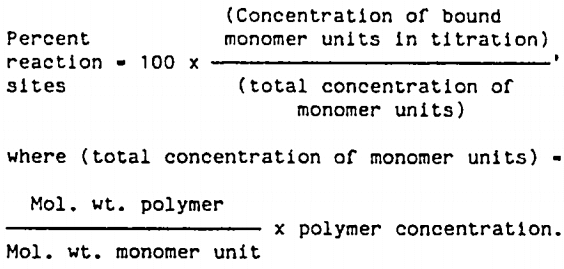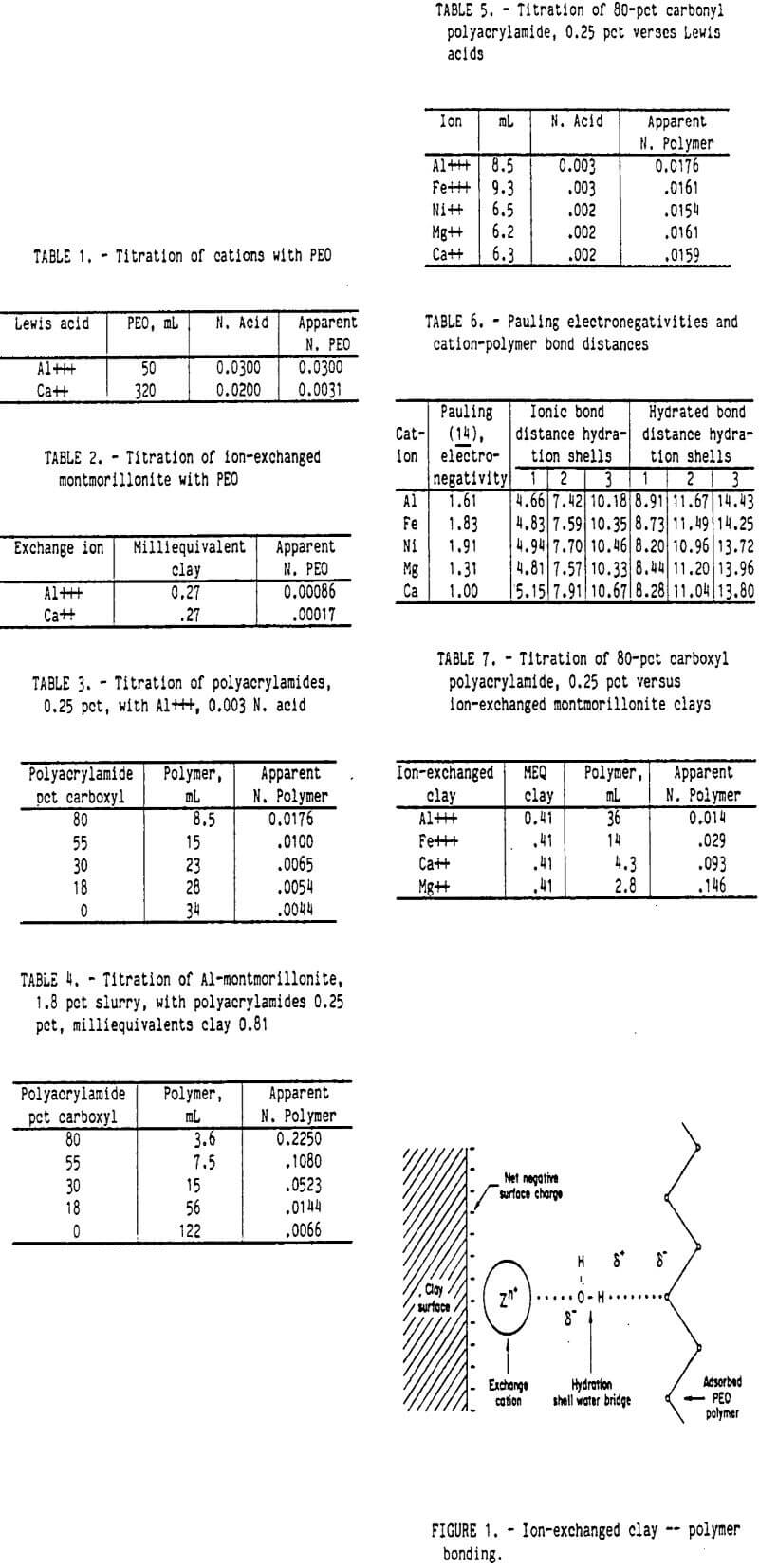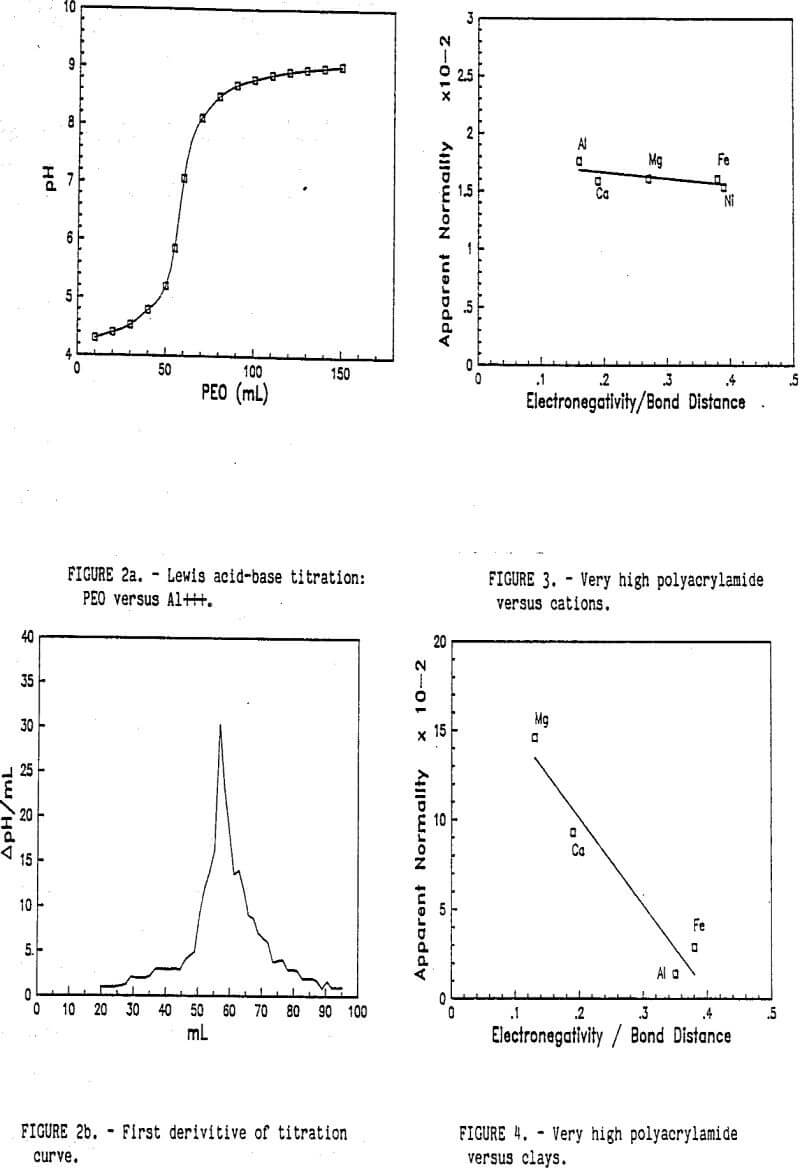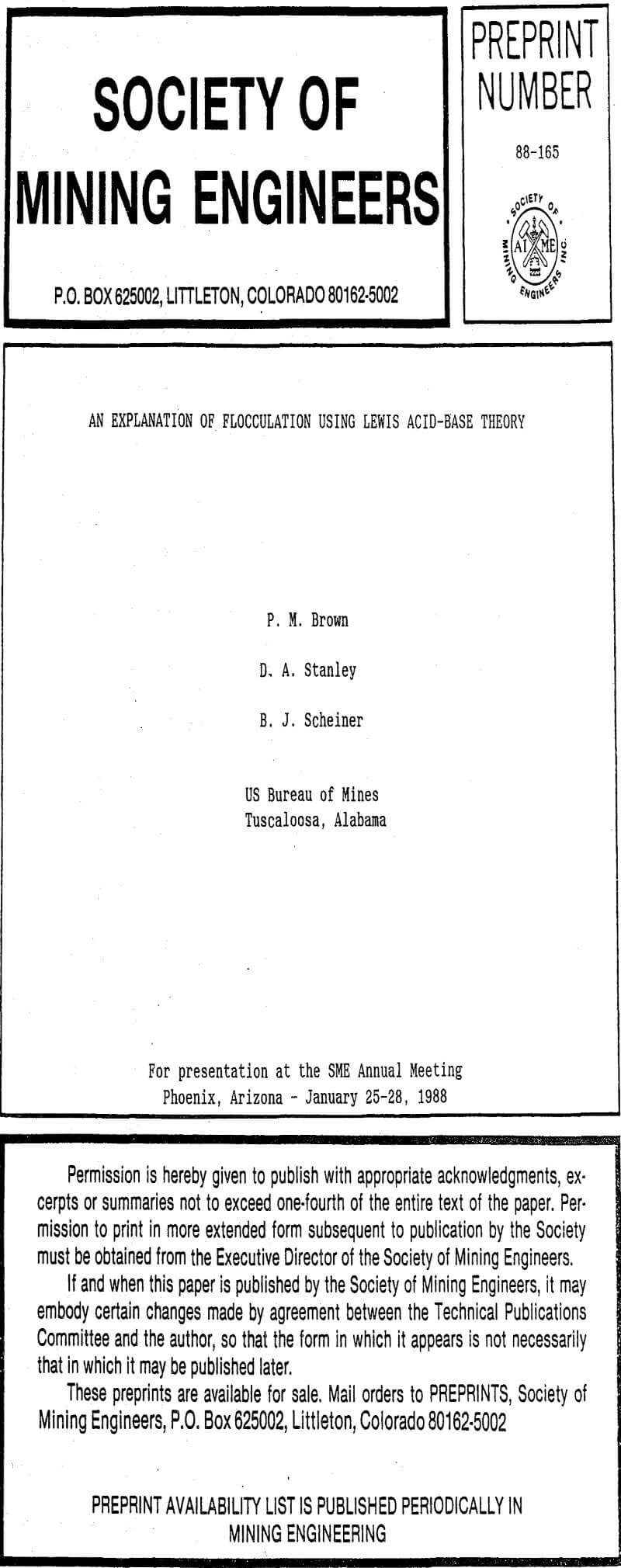The use of synthetic polymers such as polyacrylamide and its derivatives to dewater mineral-processing waste streams has become commonplace. The use of polymers often solve many of the solid-liquid separation problems encountered by the industry. However, using polyacrylamides to dewater clay containing minerals such as montmorillonite and kaolin often produces a dewatered material containing a low percent solids or a material that can not be easily handled. Because of this problem, researchers have studied many different polymers in an effort to produce strong clay flocs that will readily dewater and form a consolidated material that can be handled easily. A polymer that has shown this ability is polyethylene oxide (PEO).
If figure 1 is correct, then the basicity of the oxygen atoms in PEO should be part of the driving force for forming strong flocs. A simple representation would be that of PEO acting as a Lewis base and the exchange ion acting as a Lewis acid. By definition, a Lewis acid is any atom, ion, or molecule that is capable of receiving an electron pair from another atom, ion, or molecule. A Lewis base is an atom, ion, or molecule that has an unbonded electron pair. The strength of a Lewis acid or base is defined in terms of its tendency to accept or donate an electron pair. If the tendency is great, the Lewis acid or base is strong.
Methods and Materials
The ion-exchanged montmorillonite used in this study was prepared from Wyoming bentonite. The montmorillonite was prepared by mixing 200 g of minus 200-mesh clay and 1 .8 L of distilled water and 200 mL of a 1N solution of the appropriate metal chloride. The montmorillonite suspension was mechanically stirred 4 h and allowed to settle overnight. The supernate was removed. The sediment was resuspended In 4 L of distilled water and again allowed to settle overnight. This washing procedure was repeated eight times to insure adequate removal of the excess metal ions in the supernate. Centrifuging was necessary in the latter wash stages. This process is a modification of that described by Merriam and Thomas. Suspensions (weight of solids to volume of water) of each ion-exchanged montmorillonite were made and allowed to stir for 16 h to insure adequate dispersal of the clay particles. The clays studied were Al(III), Fe(III), Ca(II), and Mg(II) exchanged montmorillonites.
Flocculation tests were conducted using a procedure developed by Smelley and Feld. One hundred milliliters of a 1.0-pct-solids montmorillonite slurry was placed in a 250-mL beaker. The slurry was hand stirred at approximately 60 rpm. Polyacrylamide or PEO solutions were added via a syringe pump at the rate of 1 mL/min until the flocs consolidated and moved in the beaker as one mass. The flocculated clay was then dewatered by hand squeezing.
Results
According to the Lewis concept of acids and bases, metal ions and ligands are acids and bases, respectively, and their reactions to form metal complexes are acid-base reactions. If PEO is able to function as a Lewis base, it will do so through sharing the available electron pairs of its ether linkage. If the polymers investigated function as Lewis bases, typical acid-base titration curves should result when the polymer is titrated with mineral acids or Lewis acids. A titration of Al³+ with PEO was conducted to determine whether such a curve is obtained with a discernible inflection point. Figures 2a and 2b show that a typical PEO Lewis acid titration curve was observed.




